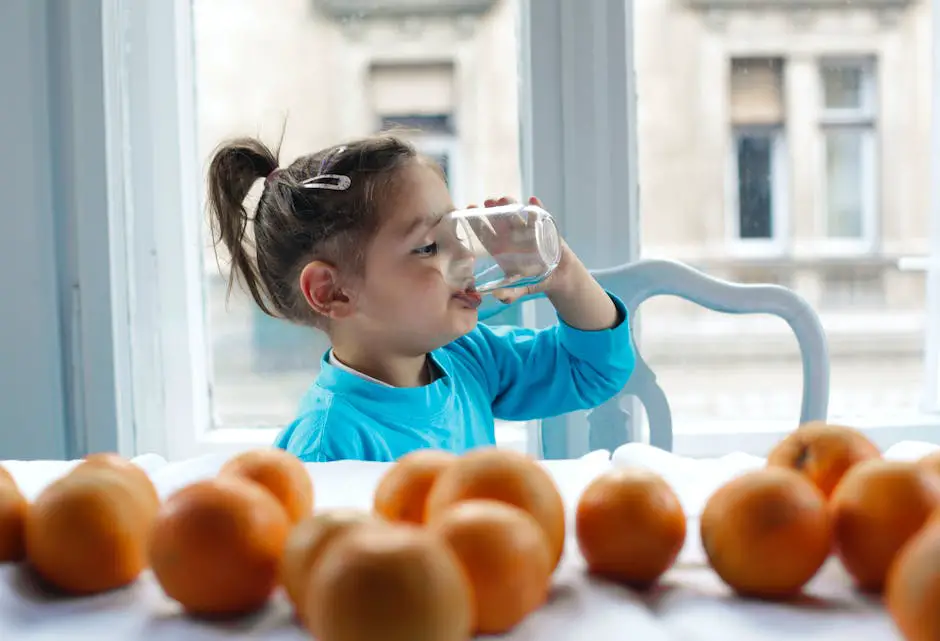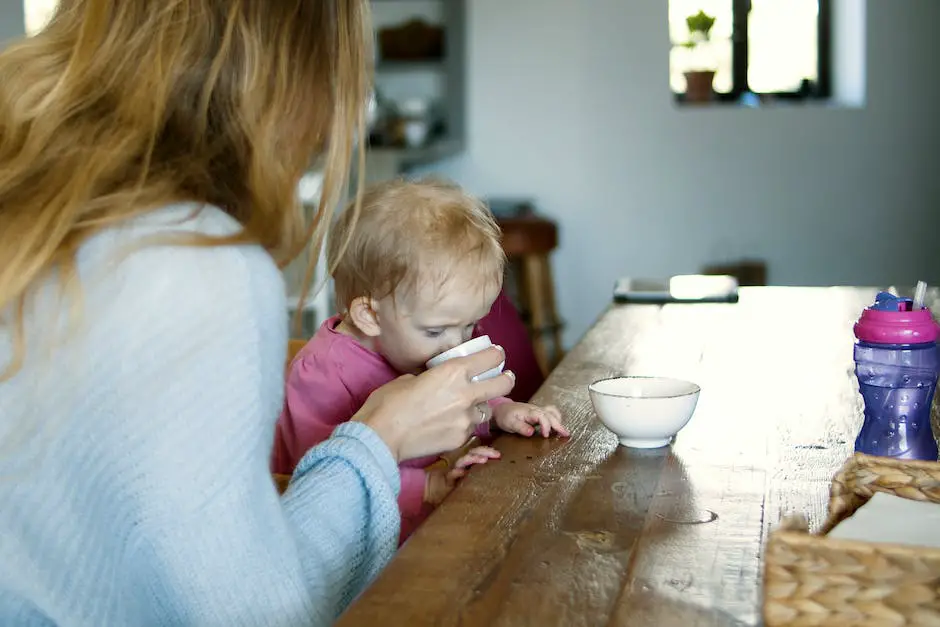The health and well-being of our children is a priority that reigns supreme and at the forefront of this, the concept of hydration plays a pivotal role. Well-hydrated children experience better metabolic functionality, increased concentration, and improved physiological health. Hydration is key to maintain crucial bodily functions like digestion, blood circulation, and regulation of body temperature. It is hence indispensable that we understand the varying hydration needs of children based on their age, weight, activity level, and the climate in which they live. Additionally, fostering and promoting healthy hydration habits early in life can set the stage for a lifetime of optimal health and wellbeing.
Understanding Hydration
Understanding Hydration: The Vital Role It Plays In A Child’s Health
Hydration plays a vital role in optimizing a child’s overall health. It helps to facilitate numerous crucial body functions, such as digestion. Digestion demands water to process what a child eats, breaking it down into nutrients for the body to use. When a child is dehydrated, their body struggles to process the nutrients properly, leading to complications such as constipation.
Hydration and Blood Circulation
Proper hydration is also vital for maintaining good blood circulation. Water is a major component of blood and essential for it to circulate efficiently throughout the body. When a child is sufficiently hydrated, their heart doesn’t have to work as hard to pump blood. This assists the body in transporting essential vitamins, minerals, and nutrients effectively. A dehydrated body, conversely, may struggle to supply these necessary nutrients, leading to lethargy, dizziness, and other severe health issues.
The Importance Of Hydration In Body Temperature Regulation
One of the most crucial body functions that heavily relies on hydration is the maintenance of body temperature. Water aids in heat resistance by distributing heat throughout the body and maintaining proper thermal balance. Excessive heat in the body can be dispelled through sweat, which in itself is largely made up of water. If a child isn’t taking in enough fluids, this could affect the body’s means of cooling down, possibly leading to serious health complications such as heatstroke.
How Much Water Does A Child Need?
The amount of water a child requires can vary depending on their age, size, activity level, and even weather. Babies under six months old don’t generally need extra water, since breast milk or formula offer them enough hydration. However, the American Academy of Pediatrics suggests that children between the ages 1 and 3 should drink around four cups of beverages a day, including water and other liquids. For children aged 4 to 8, they recommend five cups a day. As for older kids and teenagers, boys should have around 11-13 cups per day, while girls should aim for 9-11 cups. It’s crucial to make sure your child has access to fresh water throughout the day, and increase their hydration if they’re active or the weather is hot.
The necessity of educating children on adequate water consumption is indisputable, as it plays an instrumental role in their development and overall well-being. Thus, understanding hydration and its importance is essential for maintaining a child’s health.

Determining the amount of water
Determining Water Intake Based on Age
Dehydration in children can have severe consequences, which is why it’s important to ensure they are getting the right amount of water. Typically, the amount of water needed increases with age. The U.S. Institute of Medicine recommends that children between the ages of 4 and 8 should drink about 5 cups (40 ounces) of water per day. For boys and girls aged between 9 to 13 years, the recommended daily intake is around 7-8 cups (56-64 ounces). For ages 14 to 18, that recommendation increases to 8-11 cups (64-88 ounces) per day.
Calculating Intake Based on Weight
Water intake can also be determined based on a child’s weight. The rule of thumb for this method is to enable approximately 0.5-1 ounce of water per pound of body weight each day. For instance, if your child weighs 60 pounds, they should drink between 30 to 60 ounces of water daily. It’s advisable to start with the lower end of the scale and increase the amount if needed.
Considering Activity Level
Physical activity can significantly alter the amount of water needed to stay hydrated. Children who engage in more vigorous activity or sports, especially for more extended periods, will sweat more and need to replenish that lost fluid. As a standard recommendation, they should consume an additional 1.5 to 2.5 cups (12-20 ounces) of water for short periods of physical activity. If the activity exceeds 60 minutes, they would require more fluid, leaning towards sports drinks that can also replenish electrolytes.
Adjusting for Local Climate
Living in a hotter or dryer climate can also increase the amount of water needed for hydration. Higher temperatures and lower humidity can lead to more sweat production, resulting in higher fluid loss. An extra 2-4 cups (16-32 ounces) of water per day might be required, but it varies individual to individual. Always observe the child to ensure they’re not demonstrating signs of dehydration — like unusual fatigue, dizziness, or dark yellow urine.
Conclusion
Keeping children hydrated is important, but how much water they need depends on various factors — from age to weight, activity level, and local climate. It’s important to monitor these factors and adjust water intake as needed, and always consult with a healthcare provider if you have concerns about your child’s hydration status.

Educating and Implementing
Understanding the Importance of Hydration for Children
Water plays a crucial role in a child’s growth and development. It aids digestion, helps in nutrient transportation and absorption, supports cognitive function, and regulates body temperature. As a rule of thumb, children and adolescents should consume at least 6-8 cups of water a day. However, this might slightly vary depending on a child’s age, activity level, and overall health condition.
Strategies to Encourage Children to Drink More Water
To entice children to drink more water, consider using fun, colorful, and child-friendly water bottles or cups. Use an array of shapes, sizes, and characters that appeal to them. Additionally, you could create a chart to track their water intake and give them rewards for meeting their daily hydration goals.
Making Drinking Water Fun
Turn water drinking into a game or challenge. For instance, compete with them on who can finish a glass of water first, or set a timer and encourage them to finish drinking water before the time runs out.
Incorporating Water-Rich Foods Into Their Diet
Including water-rich foods in your children’s diet is another great way to ensure they’re getting enough water. Fruits such as watermelon, strawberries, cantaloupe, peaches, and oranges contain a high percentage of water. For vegetables, opt for cucumbers, lettuce, zucchini, radishes, and celery. Soups and broths also contribute to hydration.
Integrating Hydration into Their Daily Routine
Incorporate hydration into their everyday activities. Encourage them to drink a cup of water upon waking up, before and after meals, after physical activities, or any other daily routine that is easy for them to associate with drinking water.
Educating Children About the Importance of Drinking Water
Explain to your children the importance of staying hydrated in simple terms. You could say that water helps to keep their bodies working correctly and keeps them feeling good. Using age-appropriate books or videos about hydration could also help them understand why it’s crucial to drink water.
Implementing Healthy Hydration Habits
Remember, the goal is to instill healthy hydration habits that will stick with them for life. So, be patient, consistent, and make it fun. Always lead by example, ensure to meet your own daily water intake too, and express how good it makes you feel to encourage them to do the same. Frequent reminders can also be beneficial until drinking adequate water becomes an automatic habit for them.
Remember, while it’s important to promote water intake, it’s equally important not to force children.
Overhydration can also be dangerous. If the child is not willing to drink water, they could be adequately hydrated. Any drastic or concerning changes in their hydration should be discussed with a healthcare provider.

Navigating the task of getting children to adequately hydrate can sometimes be a challenge, but with the strategies outlined, such as encouraging the consumption of water-rich foods and making water-drinking enjoyable, it is an achievable goal. Understanding our children’s hydration needs is the initial step, but it is equally crucial to support them in building sustainable hydration habits. It is through our collective efforts that we can contribute to their growth, development and overall health, creating a foundation for lifelong wellness. Remember, every drop of water consumed counts towards their hydration, but it also signifies a step forward in their journey to a healthier life.
